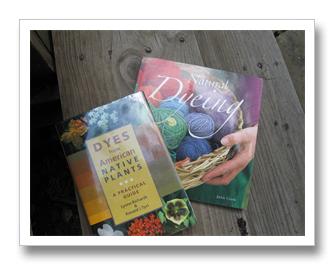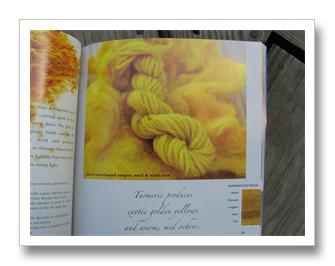I have been interested in dyeing my fiber, or yarn I have spun, During my reading
I found two interesting books, if you want to know more about dyeing with
natural plants.
Natural Dyeing by Jackie Crook has some especially beautiful illustrations.
It goes through the basic premise of what you need, how it works and I like that
there are pictures of the yarn with various mordants.
I think this book is more inspirational, wets your appetite for what may be
accomplished with natural dyes.
Some of her examples are using exotic woods, and plants that are not available
to the general population of North America. Some are common, and the colors
we see are dazzling vibrant colors. It is inspirational and could be used as a
template for experimentation of plants in your area.
The photos alone are worth a good look.
Dyes from American Native Plants by Lynne Richards & Ronald J. Tyrl is a very
all encompassing dyeing book, from history of, supplies and equipment and
the process of natural dyeing, to a unbelievable list of 7 chapters of dyeing
plants. Each chapter covers a color, Purple/Red, Gren, Yellow, Orange, Brown,
Black, and Little or no Color.
The last chapter of the book entails a catalog of native dye plants, that includes
good pictures of each plant, where it might be located and other info.
I have never dyed any fiber, but this book had me wondering around my yard
and neighborhood looking at everyone's plants in a new light.
This book looks like it would be a great resource for anyone interested in
natural dyeing of fiber, or cloth.


I've been interested in that Natural Dyeing book. Sounds like it would be a good buy.
ReplyDeleteThe only dyeing that I have done has been solar dyeing with Kool-Aid or Wiltons. I've also done some dyeing with indigo crystals which turned out to be a nice shade of blue.